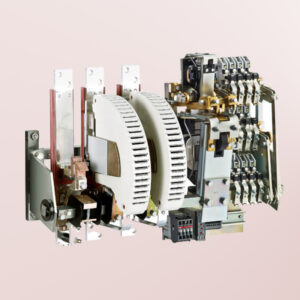TRANSFORMER
A transformer is an electrical device used to transfer electrical energy between two or more circuits through electromagnetic induction. It consists of two or more coils of wire, known as the primary winding and the secondary winding, which are wound around a common magnetic core.
The primary winding is connected to the input voltage source, while the secondary winding is connected to the load or the circuit that requires a different voltage level. When an alternating current (AC) passes through the primary winding, it creates a magnetic field that induces a voltage in the secondary winding, resulting in electrical energy transfer.
Description
A transformer is an electrical device used to transfer electrical energy between two or more circuits through electromagnetic induction. It consists of two or more coils of wire, known as the primary winding and the secondary winding, which are wound around a common magnetic core.
The primary winding is connected to the input voltage source, while the secondary winding is connected to the load or the circuit that requires a different voltage level. When an alternating current (AC) passes through the primary winding, it creates a magnetic field that induces a voltage in the secondary winding, resulting in electrical energy transfer.
Here are some key aspects and functionalities of transformers:
- Step-Up and Step-Down Voltage Conversion: Transformers can either step up or step down the voltage level of the electrical energy. A step-up transformer increases the voltage from the primary winding to the secondary winding, while a step-down transformer decreases the voltage. This voltage conversion allows for efficient transmission and distribution of electrical power over long distances and enables the use of different voltage levels in various applications.
- Power Transfer and Isolation: Transformers facilitate the transfer of electrical power from one circuit to another while providing electrical isolation between the input and output circuits. The magnetic core helps to couple the energy between the primary and secondary windings without direct electrical connection, ensuring safety and protection against voltage surges.
- Efficiency and Power Factor Improvement: Transformers are highly efficient devices, with most modern transformers achieving efficiency levels greater than 95%. They minimize power losses during energy transfer by reducing resistive losses in the windings and minimizing magnetic flux leakage. Additionally, transformers can help improve the power factor of an electrical system, increasing the efficiency of power transmission.
Transformers play a crucial role in electrical power systems, providing voltage transformation, power distribution, and electrical isolation. They are essential in various applications, including power generation plants, transmission and distribution networks, industrial facilities, electronic devices, and household appliances.






One Comment